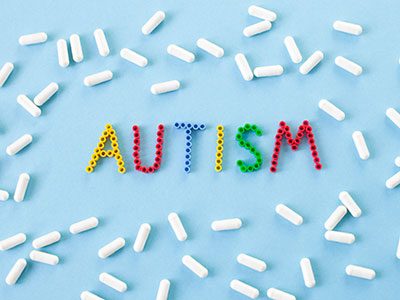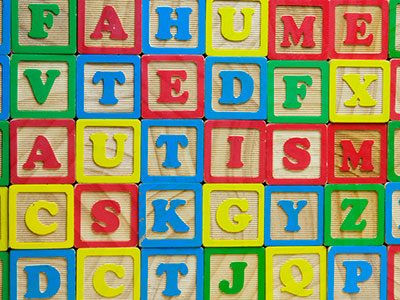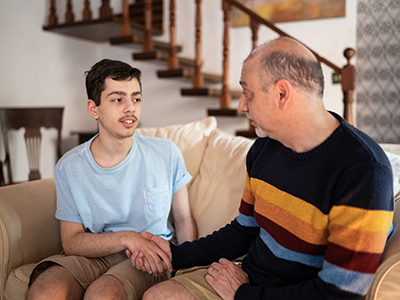With many options to choose from, finding the right intervention or therapy for your child with autism can feel overwhelming. Your child’s care team (e.g., developmental pediatrician, psychiatrist, evaluating psychologist) is a great resource for determining the right fit for your child. However, it can also be helpful for families to know what their options are — especially when your child is between evaluations or waiting for an appointment. Below, we provide an overview of the most common therapies and who might benefit from them.
Behavioral therapy
- Applied Behavioral Analysis (ABA): Broadly, this approach aims to encourage the development of new skills by rewarding desired behaviors. This technique is also known as “positive behavioral reinforcement.” Possible rewards include, but are not limited to, the following: verbal praise, engaging in a preferred activity (e.g., bubbles, iPad game), tokens, stickers or food. The goal is to fade out the use of these rewards over time. There are several types of ABA therapy:
- Early Intensive Behavioral Intervention (EIBI): This is an intensive treatment approach (i.e., 20-40 hours per week of individualized instruction) that is designed for children four years and younger. Children usually receive 2-3 years of EIBI.
- Early Start Denver Model (ESDM): Another early intervention approach, ESDM is designed for children ages 18 to 48 months. In contrast to EIBI, this method focuses on increasing a child’s motivation by following the child’s lead during play, offering choices and providing naturalistic reinforcement. It is similar to PRT (described below).
- Discrete Trial Training (DTT): DTT is often used synonymously with ABA. This is a very structured and systematic approach that involves breaking down desired behaviors into a series of smaller steps. DTT works best for individuals who learn best when taught in small, repeated steps. Data collection is also a major component of DTT and allows therapists to track and communicate progress.
- Pivotal Response Training (PRT): PRT is a more naturalistic and play-based approach that builds on the individual’s own initiative and interests. It is particularly helpful in teaching communication, language, play and social skills.
- Unlike other treatments, ABA therapy is often conducted within the home environment. This is a huge advantage as it often speeds up the learning process and promotes the generalization of skills. It also allows for other family members/caregivers to take part in the therapy. However, there are a few things to keep in mind for in-home therapy to be successful:
- Provide a space that is calm and quiet.
- Remove additional clutter and distractions.
- Provide developmentally appropriate toys and activities.
- Picture Exchange Communication System (PECS): Based on the principles of ABA, PECS teaches functional communication skills through the exchange of picture cards. Specifically, individuals are taught to use picture cards to request desired items. This method can be used with all ages.
Relationship-based therapy
- Floor-time: In this approach, parents are encouraged to get down on the floor and follow their child’s lead during play. By doing this, parents can enter their child’s world through play, ultimately strengthening the parent-child relationship and fostering social-emotional growth. Floor-time can also be done with other caregivers, siblings and peers.
- Parent-Child Interaction Therapy (PCIT): Also considered a behavioral intervention, PCIT aims to improve communication patterns, increase expected social behaviors and decrease disruptive behaviors by strengthening the parent-child relationship. Parents receive in-the-moment coaching while playing with their child, as well as receive weekly feedback on their progress. PCIT is designed for children ages 2-7.
Social Skills Training (SST)
- As indicated by its name, SST involves teaching positive social behaviors and social problem-solving skills in a small group format. Possible treatment targets include conversation skills, perspective-taking, emotion regulation, turn-taking, sharing, etc. SST groups can be done with individuals of all ages. However, in order for the groups to be successful, it is critical that individuals are appropriately matched based on their developmental level.
Cognitive Behavioral Therapy (CBT)
- This is a form of talk therapy that encourages individuals to change their behaviors by addressing the thoughts and feelings that influence them. CBT can be effective for treating a broad range of symptoms. In working with the autistic population, we often use CBT when treating comorbid anxiety, depression and executive functioning challenges. Although it can be used with a wide age range, it is most effective for individuals who can understand and verbally express their own thoughts.
 https://riseandshine.childrensnational.org/wp-content/uploads/2025/10/autism-image-feature.jpg
300
400
Rise and Shine
https://riseandshine.childrensnational.org/wp-content/uploads/2017/11/childrens_riseandshine_logo.jpg
Rise and Shine2025-10-28 15:41:562025-10-28 15:44:24Understanding autism beyond the headlines
https://riseandshine.childrensnational.org/wp-content/uploads/2025/10/autism-image-feature.jpg
300
400
Rise and Shine
https://riseandshine.childrensnational.org/wp-content/uploads/2017/11/childrens_riseandshine_logo.jpg
Rise and Shine2025-10-28 15:41:562025-10-28 15:44:24Understanding autism beyond the headlines


 Meagan Wills, PhD, was a clinical psychologist at the Center for Autism Spectrum Disorders (CASD) at Children's National. She specializes in the diagnostic assessment and treatment of children and adolescents with an autism spectrum disorder (ASD).
Meagan Wills, PhD, was a clinical psychologist at the Center for Autism Spectrum Disorders (CASD) at Children's National. She specializes in the diagnostic assessment and treatment of children and adolescents with an autism spectrum disorder (ASD).


















Leave a Comment
Want to join the discussion?Feel free to contribute!